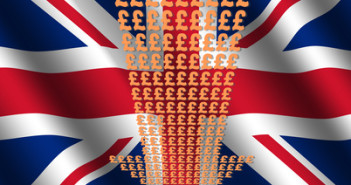By Alex Edwards at UKForex, an international money transfer service.
The pound started on the back foot this week. Positive European PMIs supported bids in EUR/GBP which in turn weighed on GBP/USD. UK Manufacturing PMI was then released and although good, it printed below market expectations – the index for January came in at 56.7 vs. expectations for 57.1. GBP/USD fell to a low of 1.6260 at the start of the week, also pressured lower by heavy selling in the GBP/JPY cross.
The pound got an unexpected boost on Tuesday morning after UK Construction PMI beat market expectations. The data showed that construction activity reached its highest level in six and a half years, rising to 64.6 in January. GBP/USD jumped from 1.6285 to 1.6345 on the news. It finished the week on a positive note too, dragged higher by the heavy bids in EUR/USD, this following ECB President Draghi’s press conference on Thursday and weak U.S. payrolls data on Friday. GBP/USD traded to a high of 1.6385 on the news but then faded lower as investors acknowledged the improved unemployment rate and the increase in private payrolls.
As for the euro, this week’s focus for investors was the ECB monetary policy announcement. The central bank left its refinancing and deposit rate on hold on Thursday, which saw the euro push higher as there were some expectations for a cut to both). At the accompanying press conference, ECB President Mario Draghi allayed fears of deflation, saying that EZ inflation risks remained broadly balanced. Although he did say that the ECB stood ready to act, EUR/USD had already gapped higher by that point, having jumped from 1.3495 to 1.3615. It failed to make a sustained break above the 1.36 figure as Draghi continued and said that the “complex situation” had stopped the central bank from acting this time around. The US jobs report saw EUR/USD test a break back above this level late on Friday.
The Australian dollar also has a positive week from the start. On Monday the RBA left interest rates unchanged at 2.5% but in a surprise move changed their statement to a neutral one: “In the Board’s judgement, monetary policy is appropriately configured to foster sustainable growth in demand and inflation outcomes consistent with the target. On present indications, the most prudent course is likely to be a period of stability in interest rates.” Later in the week, the RBA upgraded their growth and inflation forecasts for the Australian economy, which further supported the Australian dollar’s advance.
The NZD also pushed higher, helped by strong employment data released earlier in the week. There are growing expectations too that the RBNZ will increase interest rates at their next monetary policy meeting.
All of this hardly bodes well for GBP cross rates next week. We look forward to next week, when we’ll see testimonies from new Fed Chair Janet Yellen, GDP data from Europe and perhaps the highlight – the Inflation Report from the Bank of England. There’s growing consensus that the bank will alter its forward guidance in the report and lower its unemployment threshold (to consider hiking interest rates). This is due on Wednesday.
